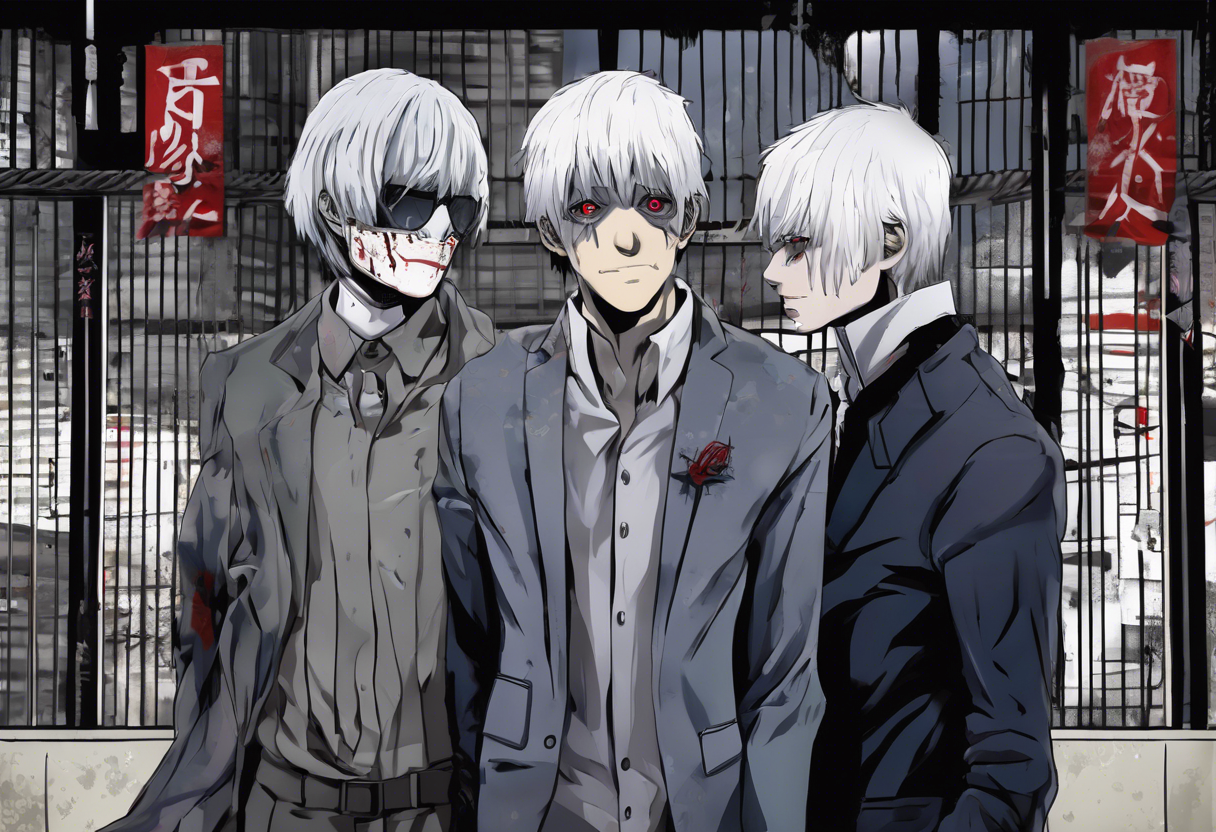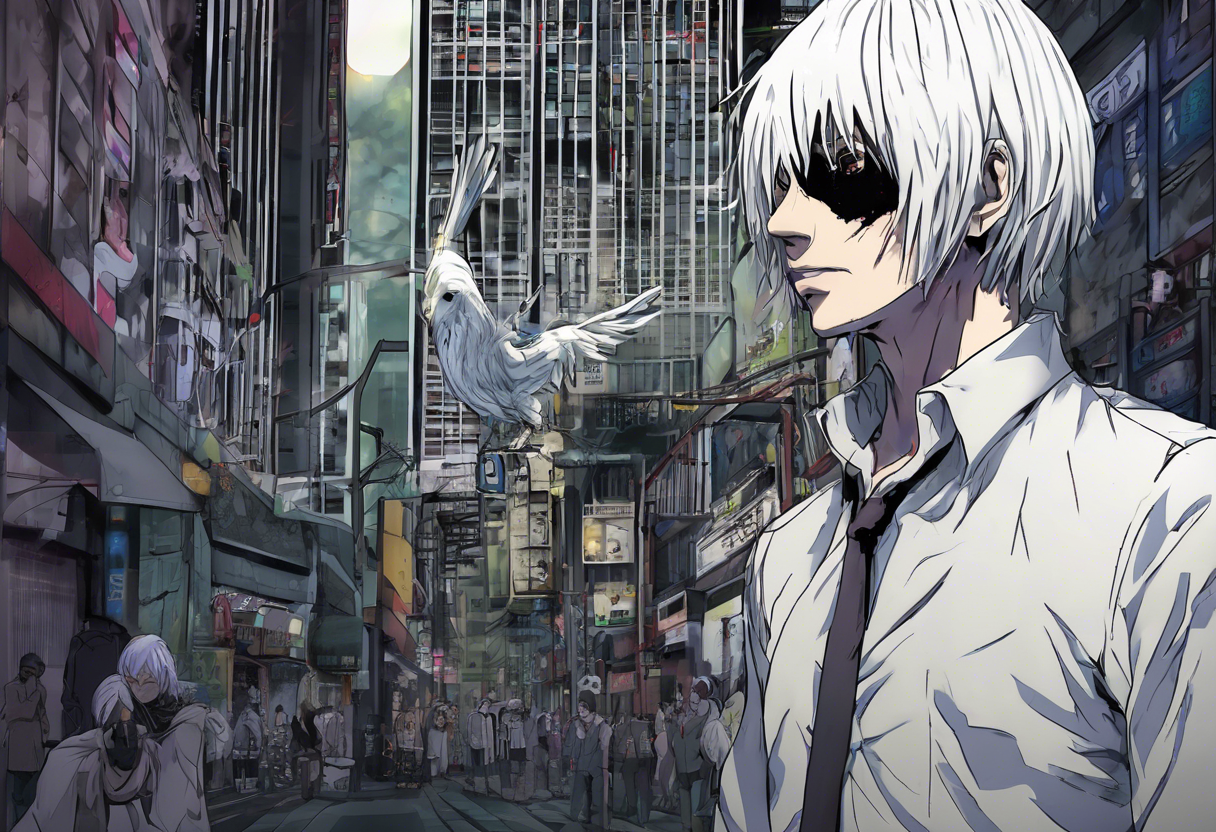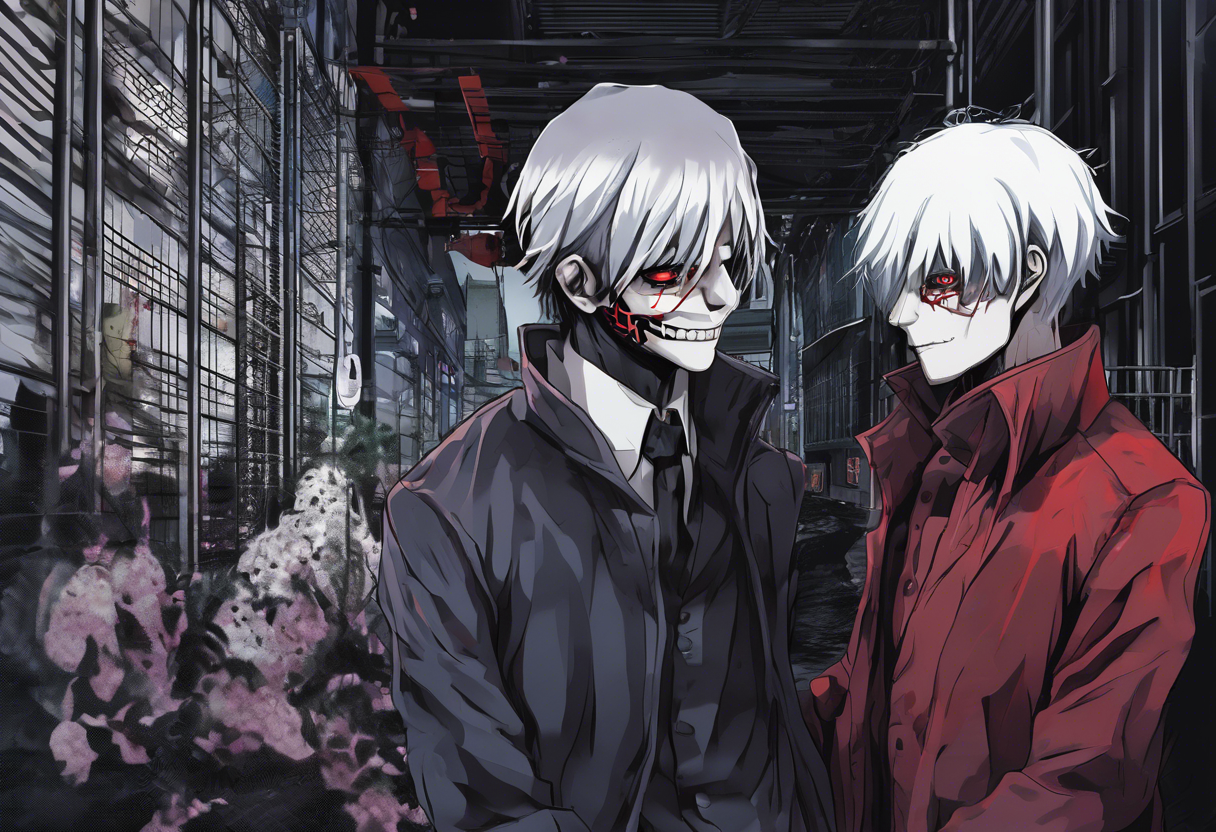Contents
Tokyo Ghoul – Episode 9: Birdcage
Introduction
"Tokyo Ghoul – Episode 9: Birdcage" is a pivotal episode in the first season of the anime series "Tokyo Ghoul," based on the manga by Sui Ishida. The episode was directed by Shuhei Morita, with the series itself produced by Pierrot and licensed by Funimation. The anime adaptation premiered in 2014, and this episode marks a significant turning point in the narrative.
"Tokyo Ghoul" is set in a world where ghouls, supernatural beings that feed on humans, live among humans in secret. The series explores themes of identity, morality, and the conflict between ghouls and the Commission of Counter Ghoul (CCG), a special task force dedicated to dealing with ghoul threats. Episode 9, "Birdcage," stands out for its intense character development, emotional depth, and the escalation of the conflict between ghouls and the CCG.
Plot Summary
Following the intense battle in the waterway, the aftermath of which saw the defeat of Inspector Mado at the hands of Touka Kirishima, the dynamics of the characters and their environments undergo significant changes. The episode begins with Touka reflecting on her actions and the realization that even her enemies, like Mado, had families and personal lives. This introspection is triggered by the discovery of Mado’s wedding ring, which humanizes him in a way that Touka had not previously considered[5].
Meanwhile, Hinami Fueguchi, who had lost her parents in a previous encounter with the CCG, begins to live with Touka and Ken Kaneki. This new living arrangement provides a sense of stability and family for Hinami, who is still grappling with the loss of her parents. Touka, who has moved out of Anteiku, a coffee shop that serves as a haven for ghouls, finds herself in a role of caretaker and protector for Hinami, further emphasizing her growth as a character[1][4].
Amon Koutarou, who had been Mado’s partner and is still reeling from his loss, is reassigned to the 11th ward. This move is part of a broader strategy by the CCG to address the growing ghoul threat in different wards. Amon’s relocation also introduces him to new colleagues, including Shinohara, Hoji, and Seido Takizawa, who will be covering the 20th ward. This shift in personnel sets the stage for future conflicts and alliances[1][5].
The episode also delves into Amon’s past through a flashback, showing his first meeting with Mado and their initial partnership. This flashback highlights the bond between Amon and Mado, making Amon’s current grief more poignant. The memory of Mado continues to influence Amon’s actions and decisions, as he struggles to come to terms with the loss of his partner and friend[5].
As the episode progresses, it becomes clear that both the ghouls and the CCG are preparing for a larger conflict. The ghouls, particularly those in the 11th ward, are mobilizing in anticipation of a war against the CCG. This escalation is mirrored in the 20th ward, where new inspectors are tasked with handling the growing ghoul presence. The calm before the storm is palpable, with both sides readying themselves for the impending battle[4].
The narrative also touches on the theme of family and its various forms. Touka’s new role as a guardian to Hinami contrasts with Amon’s loss of his partner, Mado, who was like a brother to him. These dynamics underscore the complexities of relationships and the different ways in which characters find and define family[4][5].
Themes and Symbolism
"Tokyo Ghoul – Episode 9: Birdcage" explores several central themes that are crucial to the series. One of the most prominent themes is the concept of family and how it is defined. For characters like Touka and Hinami, family is not just about blood ties but about the bonds they form with others who provide support and protection. This theme is juxtaposed with Amon’s loss, highlighting the emotional depth and complexity of the characters’ relationships[4][5].
Another significant theme is the humanization of enemies. The discovery of Mado’s wedding ring and the flashbacks of his past serve to humanize him, making him more than just an antagonist. This humanization challenges the binary view of ghouls and humans, encouraging viewers to consider the moral ambiguities of the world they inhabit[5].
The episode also delves into the theme of grief and loss. Amon’s mourning of Mado and Hinami’s adjustment to life without her parents are poignant examples of how characters cope with loss. These narratives add an emotional layer to the story, making the characters more relatable and their struggles more compelling[1][5].
Symbolically, the title "Birdcage" can be seen as a metaphor for the confinement and surveillance that both ghouls and humans face. The CCG’s efforts to control and monitor ghoul activity create a sense of a "birdcage" around the ghoul community, while the ghouls’ own preparations for war suggest a desire to break free from this confinement. This symbolism underscores the tension and conflict that drive the plot forward[4].
Cultural Impact
"Tokyo Ghoul – Episode 9: Birdcage" has had a significant cultural impact, particularly within the anime community. The episode’s emotional depth and the escalation of the conflict between ghouls and the CCG resonated strongly with viewers. The series itself has influenced other anime and manga, with its themes of identity, morality, and the struggle between different groups being explored in various other works.
The episode’s release was met with positive reception, with fans praising the character development and the intense plot progression. The series has also been referenced in other media, such as fan art, cosplay, and fan fiction, further indicating its cultural significance[4].
Critical Reception
Critically, "Tokyo Ghoul – Episode 9: Birdcage" was well-received for its storytelling, character development, and emotional impact. Reviewers praised the episode for its ability to balance action and emotional depth, making it a standout in the series. The humanization of characters like Mado and the exploration of themes such as grief and family were particularly highlighted as strengths of the episode[4][5].
However, some critics noted that the pacing could be uneven at times, and the introduction of new characters and plotlines might feel overwhelming for some viewers. Despite these minor criticisms, the episode was generally praised for its contribution to the overall narrative of "Tokyo Ghoul"[4].
Legacy
"Tokyo Ghoul – Episode 9: Birdcage" continues to be a significant part of the anime’s legacy. The episode’s impact on the series’ narrative and character development is undeniable, setting the stage for the intense conflicts that follow. The themes explored in this episode, such as the humanization of enemies and the complexities of family, have resonated with audiences and inspired other creators.
The episode remains a favorite among fans of the series, and its influence can be seen in other anime and manga that explore similar themes. As a part of the broader "Tokyo Ghoul" universe, "Birdcage" continues to inspire and engage audiences, solidifying its place in anime history[4][5].
References
- https://www.imdb.com/title/tt3978474/plotsummary/
- https://tokyoghoul.fandom.com/wiki/Episode_9
- https://www.imdb.com/title/tt3978474/
- https://wherever-i-look.com/tv-shows/tokyo-ghoul-season-1-episode-9-birdcage-overview-review-with-spoilers
- https://triptychalessandro.wordpress.com/2014/09/02/tokyo-ghoul-episode-9-review-birdcage/







